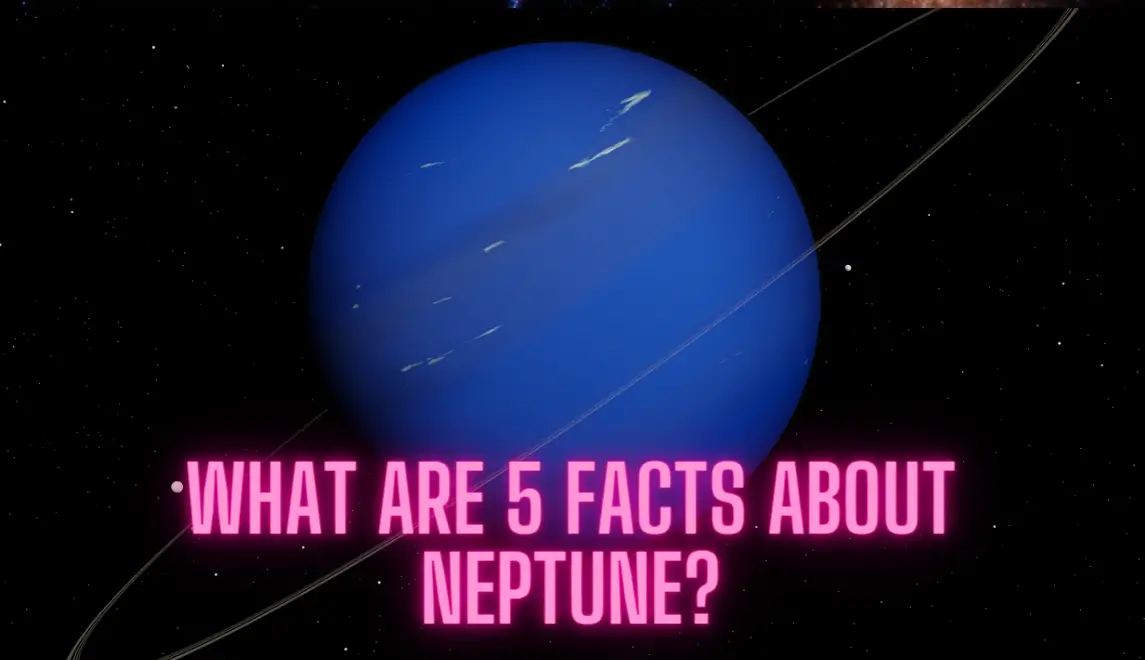Introduction
Neptune, the eighth planet in our solar system and the one that is believed to be the farthest away from the sun, continues to enchant both amateur and professional astronomers and space enthusiasts with its enigmatic and beguiling characteristics. Neptune is a gas giant with an atmosphere mostly made up of hydrogen and helium. It was named after the Roman god of the sea. This article delves into five fascinating facts about the planet Neptune, illuminating some of its distinctive qualities and adding to our comprehension of this far-off celestial entity.
1. The Giant in Blue
Neptune’s brilliant blue color is one of the most eye-catching characteristics of this planet. Methane, which is present in minute amounts in the planet’s atmosphere, is responsible for giving it its distinctive hue by soaking up red light and reflecting blue light. This entrancing hue differentiates Neptune from other gas giants like Jupiter and Saturn. In spite of its alluring appearance, the precise cause for the existence of such high amounts of methane in Neptune’s atmosphere is still a topic of investigation that is being carried out currently.
2. Furious Winds
The planet Neptune has some of the most powerful winds in the solar system, with gusts reaching incredible speeds of up to 1,300 miles per hour (2,100 kilometers per hour). It is believed that the rapid rotation of the planet and the planet’s tremendous internal heat source are both contributing elements in the production of these supersonic winds, which have been measured to be the fastest ever recorded on any planet in the solar system. The strong winds are responsible for the formation of enormous storms, such as the well-known Great Dark Spot, which was spotted by the Voyager 2 probe in the year 1989.
3. An Icy Core
Buried deep below Neptune is a core that is primarily made up of rock and metal. This core is encircled by a mantle that is made up of ices formed of water, methane, and ammonia. This chilly composition adds in some way to the one-of-a-kind qualities of Neptune. It is believed that the core has a mass that is nearly equivalent to that of Earth and that it is responsible for the tremendous gravitational pull that the planet has. The study of Neptune’s core provides important insights on the birth and development of gas giants in our solar system, even if scientists do not yet have a complete understanding of the nature of Neptune’s interior.
4. Ringed Beauty
The Beauty of Its Rings Neptune, like its celestial twin Uranus, possesses a set of rings that encircle the planet’s equatorial region. Neptune’s rings are made up of dust particles and are predominately made of ice, however they are not as conspicuous or well-defined as Saturn’s rings, which are iconic in their own right. During star occultations in the 1980s, these weak rings were found, and further studies, particularly those performed by the Hubble Space Telescope, have revealed significant information about the composition and structure of the rings.
5. Moons Galore
An Enormous Number of Moons: Neptune is Accompanied by an Entertaining Company of Moons, which Contributes to Its Allure. There are a total of 14 moons known to orbit the planet, with Triton being the largest of them all. Triton is an unusual moon since it is the only huge moon in the solar system to have a retrograde orbit. This means that its orbit moves in the opposite direction to that of its parent planet, which is why it is called a “retrograde moon.” This points to the possibility that Triton was an item that was caught from the Kuiper Belt, which is a region beyond the orbit of Neptune that is home to frozen bodies and dwarf planets.
Conclusion
Neptune, the mysterious blue monster, continues to attract us with its stunning characteristics and mysteries due to the fact that it is so large. Neptune is a planet with a lot of information and prospects for research, which can be seen in its brilliant blue color, its violent storms, and its cold core. As our knowledge of this faraway planet grows deeper, additional studies and future missions hold the promise of revealing more fascinating details about this intriguing celestial body. This will increase our awareness of the wide and amazing universe that we live in.
![]()
